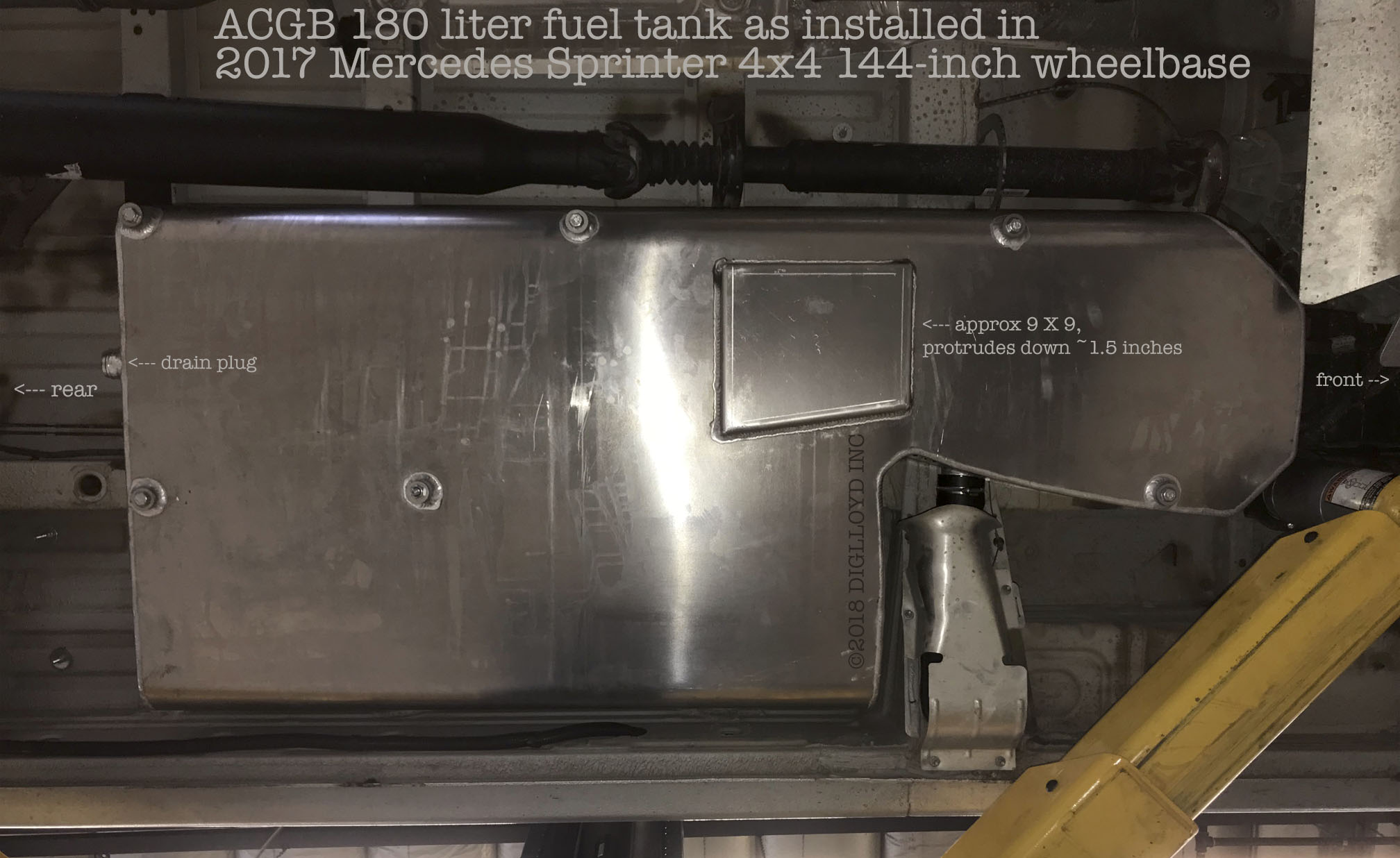Napabavarian,
Your numbers may be slightly off.
For ALL USA Specification Sprinters (2002 T1N's - 2018 NCV3's) the standard fuel tank capacity is 100 liters
(26.4172 US Gallons).
Not sure of the precise T1N fuel light protocols (I used to know them well when I drove a 2006 T1N 3500).
For the NCV3 the fuel light comes on at pretty precisely 1/4 (25 liters...6.6043 US gallons) tank of fuel left.
In order to determine how far that those 25 liters/ 6.6043 US Gallons will take you, you need to multiply
your current MPG (from your dashboard display) by the 6.6043 gallons.
As far as when you will "run out of fuel", the only way to truly find that out is to fill up a fuel can, and
drive until it runs out. (That is patently NOT good for your CRD diesel engine, and while it will get you the
answer, the damage doing so does may far outweigh having the answer, and the answer is highly variable).
How far you can go before you reach "0" fuel level is totally dependent on the fuel mileage you are currently
getting, which is variable depending on how much load/cargo is in/behind your Sprinter, which way the wind is
blowing (headwinds vs tailwind vs crosswinds) , the current terrain (uphill grades vs level travel vs downhill grades),
how fast you drive.....how fast you accelerate.....whether or not you shift out of gear waiting in traffic.....any
of the multitude of things a driver can effect from the driver's seat.
My 2014 516/3500 NCV3 4 cylinder @ ~7,000 lbs. went 559.3 miles this weekend, and used 25.203 gallons of fuel
resulting in 22.1918 miles per gallon. The low fuel light illuminated @ 418.7 miles. Temps ranged from 57 deg. F to
32 deg. F near the end of the trip.
One week ago, with significant headwinds, on exactly the same route, running a little faster on the Hampton Roads
Beltways and tunnel it was only getting 21.5845 miles per gallon so I decided running out of fuel late at night in the
Northern Neck of Virginia (Rt. 17 is pretty desolate from Tapahannock to Port Royal and US 301 is nearly as
desolate from Port Royal to Dahlgren) so I stopped in Tapahannock and added 3.390 gal. of fuel.
The dashboard display of the number of miles remaining until "0" fuel last week suggested I would run out of fuel
18 miles before reaching my favorite Murphy Express fuel stop.
This week it suggested I would only be 2 miles short and as it turned out I could have gone another 26.703 miles
on the 1.2033 gallons left in the tank.
I can normally make the round trip from that fuel stop, to my place in Cape Hatteras (Buxton) and back without
adding any fuel, but I watch side trips, and all of the environmental factors (headwinds mostly) and make a decision
based on when the low fuel light comes on.
Normally, if the fuel light comes on @ > 415 miles I can easily make the rest of the trip.
If the light comes on @ < 410 miles, I don't like to push it.
Hope this helps,
Roger

